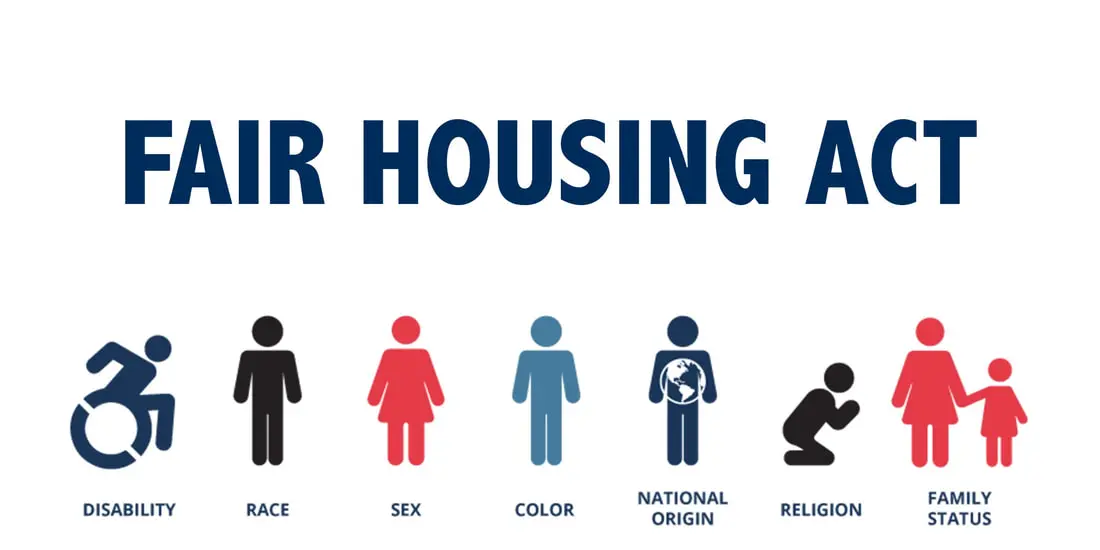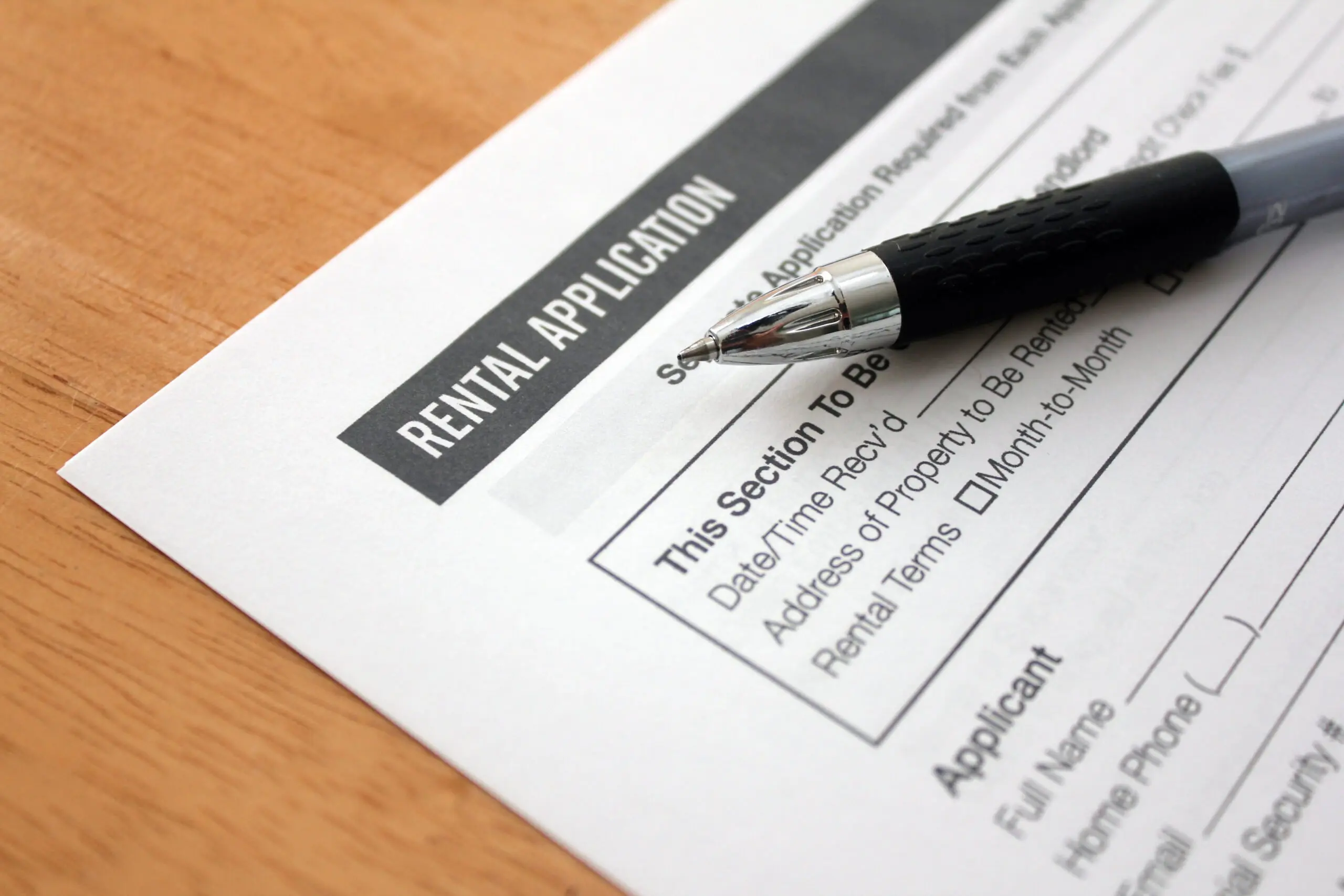You’ve marketed your rental property. You’ve done multiple showings. You’ve gathered a couple of promising applications. Now what?
Having multiple prospective renters interested in your property is wonderful. Next, you’ll need to determine how you plan to pick between two or more good tenant candidates.
When it comes to choosing between two or more potential tenants, it may feel like you want to close your eyes and throw a dart at the applications. But if you want to put the right tenant in place –– while also staying in step with housing laws –– it’s going to take a little more than that.
We’ll walk through must-do criteria stages, important documentation processes, and anti-discriminatory policies to uncover the best method of picking between two or more renters.
How to Pick a Good Tenant
1. Adhere to Fair Housing Laws
The federal Fair Housing Act provides protection against housing discrimination. For landlords, that means you cannot pick tenants based on their race, color, religion, nationality, sex, gender identity, family status, or disability.
Individual states also have additional requirements for fair housing. Even the appearance of discriminating against any of these protected groups of people could lead to serious trouble.

Image source: eXp Realty
Failure to comply with the fair housing laws can bring along hefty consequences, so it’s important that you choose tenants with an intentional eye toward equity. Watch out for the following practices that could be considered discriminatory in the tenant selection process.
- Do not advertise specifically to a particular group of people or exclude any group of people in your marketing.
- Do not include questions that would identify people with a protected group on rental applications.
- Do not set different standards of income or credit for different people.
- Do not deny accommodation (such as allowing service animals) to disabled individuals.
- And of course, do not select/deny applications based on any protected identity.
2. Create Standards
In order to ensure everything is equitable in your tenant selection process, it’s helpful to establish standards that you use across the board. Create a threshold of objective minimums that every applicant must meet in order to make the process fair for all. In most scenarios, landlords can legally create limits around the following categories.
Credit Scores. Setting a numerical minimum for an applicant’s credit score can be helpful if you know you wouldn’t be comfortable with anything lower. But keep in mind that credit scores don’t present a full picture of a person’s financial health. As such, you may want to leave a bit of margin in your credit score standards, in an effort to not weed out otherwise good tenants.
Rental History. Alarms should go off if an applicant has a history of late rent payments, evictions, or early lease terminations. Some of this information will be obtainable via a credit history report, but you’ll also want to follow up on prior landlord references to verify. (See below.)
Monthly Income. A tenant should be able to produce verifiable income, usually in the form of paystubs, an employer’s letter, court order documents, social security statements, tax returns, etc. The rule of thumb is that the applicant should be able to prove that their gross monthly income is at least three times greater than the rent. As long as the amount is verifiable, you should not favor one source of income over another, or it may look like discrimination.
Criminal Background. Be sure to check state and local housing laws as you set the standard for criminal activity. Landlords are typically able to rule out any applicant who has a history of violent crime. However, in some locations it’s considered discriminatory to deny a rental application based on certain convictions. It’s also important to remember that an arrest is not the same as a conviction. To avoid the appearance of discrimination, be sure to word your criminal background criteria carefully.
Allowed Preferences. Usually property owners are allowed to state a no-pets or non-smoking policy for their rental. The size and type of pet can be distinguished as well. For example, you might have a preference for no dogs over twenty-five pounds. The exception, of course, is service animals. Under fair housing laws, service animals are not considered pets, and an applicant cannot be denied (or charged extra) for having a service animal.
Occupancy. You can set reasonable occupancy limits for your property that limit the number of people who can stay there. The general standard is usually two people per bedroom, but exceptions are made for certain layouts (such as bedrooms over a specific square footage or a second living room that could accommodate a sleeper sofa.)
3. Document Your Criteria
Once established, it’s a good idea to document all of your rental decision criteria upfront. Presenting the list of minimum standards to potential applicants can help them make an informed decision about whether or not they’re a good match for your property.
This can save the applicant money on application fees and can save you time on processing applications. In addition, you show that you’re being proactive about fair housing standards.
4. Contact References
It’s in your interest to request references from rental applicants. And it’s in your best interest to call those references! Remember, a reference on paper does you no good.
Prior landlord references are the most valuable when considering a new applicant. However, if your applicant is renting for the first time, consider asking for employer references or other character references. (You may also need to ask for someone to cosign the lease as a guarantor.)
Consider the following prior landlord questions as you’re following up with applicant references:
- How long did the tenant rent from you? Why did they leave?
- Did the tenant keep up with rent payments? Any late rent?
- Did the tenant uphold all the terms of the lease?
- Were there any noise complaints against this tenant?
- Was the property maintained appropriately by the tenant? Any damage?
- How would you describe your working relationship with the tenant? Did they communicate well?
- Would you rent to this tenant again in the future? Why or why not?

How to Pick Between Two (or More) Good Tenants
Choosing between multiple well-qualified tenants may seem like a good problem to have. And in general, it is! It means your property is desirable in the market. But a good problem can turn into a real problem if you don’t set up procedures for how you intend to choose between two or more good applications.
Choosing “First Come First Served”
The easiest and fairest way to choose between good rental applications is by date. If you have a few people who meet or exceed your minimum standards — and their references have been checked out — you can choose based on the first-come-first-served method. Simply put, the first qualified tenant to turn in their application is the one to get the property.
If you use this method, you probably want to communicate with other parties as they express interest. Let them know that there is another application (or applications) in the queue. After prior applications are verified or denied, theirs will be up for consideration.
This is a courteous practice, because people may want to then continue to look for housing in the meantime if their application is further down the list.
Choosing on Application Strength
However, sometimes the first applicant isn’t really the best applicant. Landlords have the right to choose based on application strength, as long as the reasons for denying other applicants are non-discriminatory.
For example, you may have several potential tenants who meet your minimum income standards, but you could choose the applicant who makes $200 more per month if you want. Or, all other things being equal, you could choose an applicant who has a more established rental history.
If you’re choosing based on application strength, you will most likely be throwing the date of application out the window. However, if you have two applications that are comparable in every way, the fairest thing to do would be to select the person who turned in their application first.

Accepting Rental Bids
In a hot rental market, sometimes landlords have the ability to contact qualified applicants and negotiate on the rental amount. Obviously in that scenario, the applicant who offers the most money in rent would be chosen over other potential renters.
While this practice may seem shady, it is legal in an open market situation. Landlords have the right to choose tenants based on what benefits their business the most (assuming fair housing laws are met), and higher rent definitely qualifies as a benefit to the landlord.
Following the pandemic-related housing shift, many urban locations are now experiencing a high demand for rental units coupled with lower inventory. This type of atmosphere is ideal for accepting rental bids from applicants and using that as a basis for selection.
Documenting Everything
No matter how you pick between two or more tenants, you will need to put everything in writing. Keeping good documentation helps to prove that you did not discriminate between applicants in a way that violates fair housing guidelines.
For example, perhaps you had an applicant who produced disability benefits as their source of income. If you ended up denying their application based on an early lease termination in their past, you will need to put that reason in your records. Otherwise, it may seem like you denied the individual based on their source of income.
Similarly, if you had a mother of color who met all your minimum standards, yet you chose a single male based on a higher monthly income, you’ll need to document the male’s specific income figure. Failure to do so could lead to a fair housing dispute based on sex, color, and/or familial status.
Keep a folder (either physical or digital) of all applications, including screening documents. Make sure that folder contains notes about how you reached your decision to accept or deny all applicants, and of course, take care that those reasons are clearly non-discriminatory.
Also, if you used information from a reference to make your decision, you’ll want to keep that on file as well. Ideally, you could keep a recording or a transcript of the phone call (but you must ask permission when the call starts). If that’s not an option, be sure to take thorough notes regarding the reference’s answers to your questions.
What to Do After You’ve Chosen a Tenant
After you’ve chosen a tenant and they’ve accepted your offer, you’ll need to reach out to those applicants who did not get selected. When you do, be sure to clearly state the reason that their application was denied, in order to avoid any appearance of discrimination.
If you chose based on the first-come-first-served method, you can state that there was a qualified tenant who got their application in first. While this news may come as a disappointment, the criteria is easy for denied applicants to comprehend. We all understand a queue!
If you chose based on application strength, you will want to mention the point that made the other person’s application rise to the top. For example, “The applicant that we chose exceeded our monthly income standards” or “The tenant that was placed in the property had a long and impeccable rental history.”
You do not have to reveal a tenant’s specific qualities: “The chosen one had a credit score of 50 bazillions and has held down jobs as a brain surgeon and rocket scientist simultaneously for twenty years.” And you definitely should not speak negatively about the denied applicant: “You had the lowest income of anyone who applied.”
Keep it simple and clear. The goal of stating (in general terms) what made you choose one application over another is merely to pinpoint the objective criteria used. While this doesn’t guarantee that you won’t be questioned about discrimination, it does indicate that you used fair housing standards in your determination.
That being said, according to the Fair Credit Reporting Act, applicants who were denied based on an element within their credit report will need to be made aware of this fact concisely.
Include the name and address of the credit agency that you used to obtain the report, and let them know they have the right to obtain a free copy for themselves under the Fair Credit Reporting Act. Often the credit reporting service will provide you with wording that you can pass on to the applicant.

5 Steps to Pick the Best Tenant
To summarize, here’s a step-by-step process to follow when wondering how to pick between two tenants.
Step One: Create a list of standards for your application. Be sure that this list adheres to fair housing laws and does not discriminate against protected groups of people.
Step Two: Provide this list to potential tenants to create transparency in the process. If they know they don’t meet the criteria, then they won’t waste time applying.
Step Three: Collect applications. Communicate with applicants along the way; let them know the timeframe in which you’ll get back to them.
Step Four: Determine your decision process. Will you consider each application by date, or will you pool applications and choose the best one? Use the same process for all applications to avoid the appearance of discrimination.
Step Five: Notify all applicants. When you’ve reached a decision, let the denied applicants know why another tenant was chosen.
Above all, remember to take your time in the process of picking a renter. Don’t get caught up in simply filling a vacancy. Choosing the right tenant will save you countless headaches in the future, and that’s worth the time spent now.
At New Western, we realize that landlord best practices –– like choosing between two or more tenants –– are a big part of real estate investing. That’s why we’ve created a resource center to help investors along the way. Visit the Managing Your Investment information portal for more tips.








